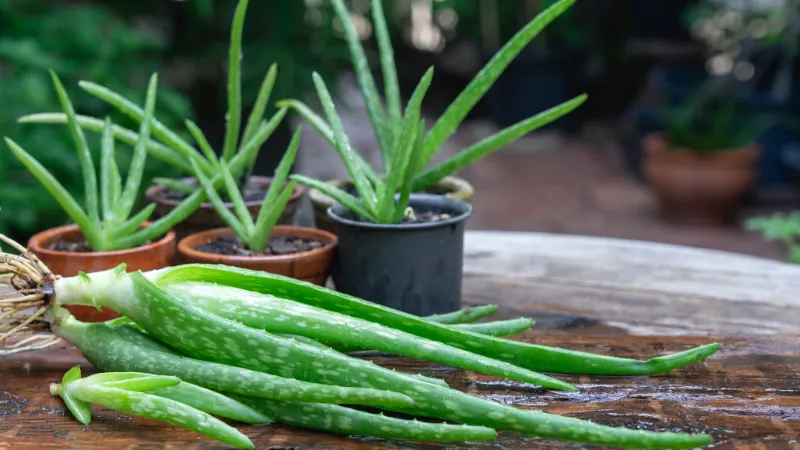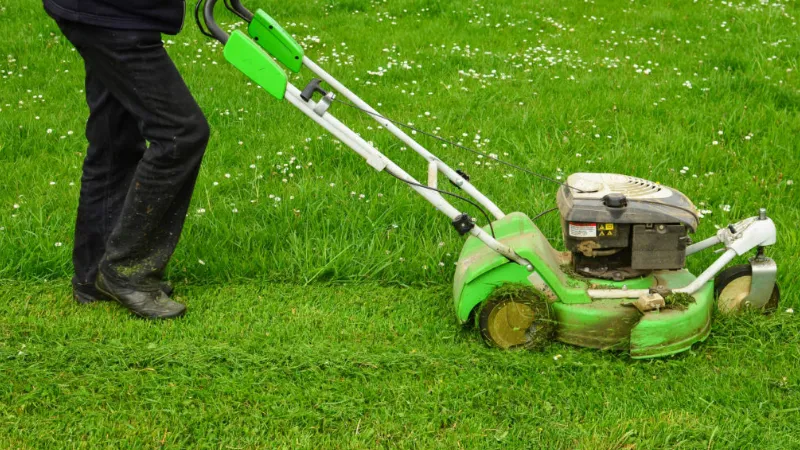We’ll talk about common watering errors in this blog post, as well as how to save an overwatered aloe vera plant.
How to save an overwatered aloe vera plant? Remove the aloe plant from its pot, Remove the dead/damaged roots, remove any yellow or brown leaves, treat the remaining healthy roots with a fungicide, select a new pot, choose a well-draining potting soil, and repot the aloe plant.
Learn how to save an overwatered aloe plant by reading on.
What is An Aloe Plant?
A plant genus called Aloe contains more than 560 species of succulent flowering plants.
The most popular species of Aloe is Aloe Vera, which translates to “true aloe.” This name was given to it because aloe vera is grown as a standard source for many pharmaceutical uses.
For comparable purposes, other species are also raised and harvested from the wild, such as Aloe Ferox.
An Aloe plant is indigenous to tropical regions such as the various islands in the Indian Ocean, including Comoros, Reunion, Mauritius, and many more. Besides the Arabian Peninsula, Jordan, Madagascar, and Southern Africa, aloes are native to these regions as well.
Other regions of the world, including the Hawaiian Islands, North and South America, India, Australia, the Mediterranean, and many others, have also accepted certain Aloe species as native plants.
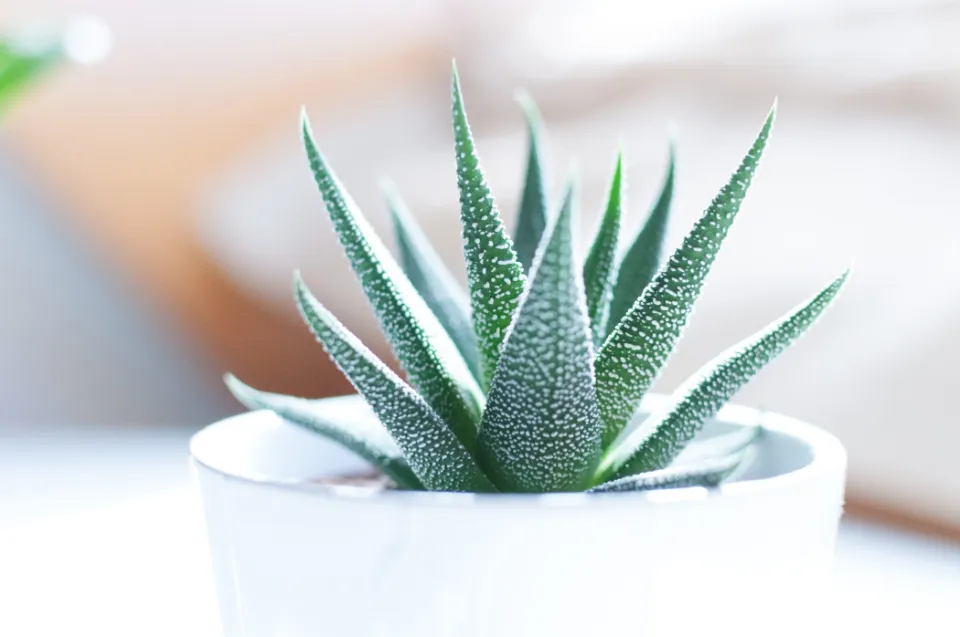
Can You Save An Overwatered Aloe Plant?
You can save an overwatered aloe plant, so let’s start with that.
But it will take some time and work from you. However, if you overwatered your aloe, all is not lost.
In fact, it is among the most typical errors people make when taking care of this well-liked houseplant.
How to Save An Overwatered Aloe Plant?
Let’s go over how to revive your aloe plant now that you’re aware that you overwatered it.
Remove the Aloe Plant from Its Pot
Take your plant out of the pot first so you can inspect the roots.
You should look for mushy, soft, or damaged roots as these are symptoms of root rot.
White is the color of healthy aloe vera roots. Also, roots that smell foul can be an indication of rotten roots.
Remove the Dead/damaged Roots
It is necessary to remove any roots that show signs of root rot or damage and to prune them back until only healthy roots are left.
Any mushy, soft, or blackened roots should be removed with a sharp knife or pair of gardening shears.
Make sure to clean your tools thoroughly both before and after use to prevent the spread of fungus.
It’s crucial to remove any damaged roots because they will only rot further and make it more difficult for your plant to absorb water.
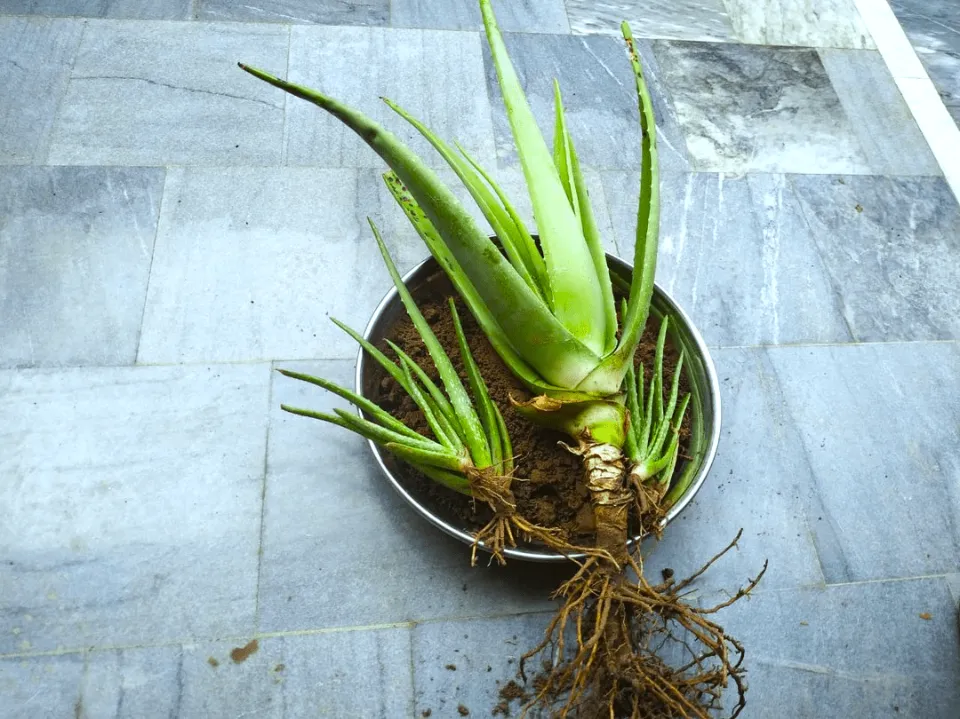
Remove Any Yellow Or Brown Leaves
Aloe is a succulent, so their ability to store water in their leaves is remarkable. This means that when overwatered, the leaves are often the first to show signs of stress.
Your plant is overwatered and needs immediate attention if its leaves have turned yellow or brown.
To save your aloe plant, you’ll need to remove any yellow or brown leaves.
Cut the leaves at the plant’s base with gardening shears or a sharp knife.
Be sure to disinfect your tools before and after use to avoid spreading any fungal infection.
Treat the Remaining Healthy Roots With a Fungicide
After trimming away the damaged roots, you must apply a fungicide to the remaining healthy roots. This will shield your plant from disease and help stop further root rot.
Choose a fungicide that is appropriate for use on aloe plants from the many that are offered on the market.
Select a New Pot
It is crucial to select a new pot that will allow for proper drainage because you will be replanting your aloe vera.
Terracotta pots are a good choice because they are porous and will aid in evaporating extra moisture.
Just keep in mind that during the warmer months, terracotta pots can dry out quickly, so you’ll need to monitor the watering.
Make sure the pot you choose is barely bigger than the plant’s root ball.
A pot that is too big will have soggy soil, which might cause overwatering.
A pot that is too deep won’t be necessary because aloe vera plant roots grow horizontally rather than vertically.
Also, make sure that there is a drainage hole in the bottom of the pot so that excess water can escape.
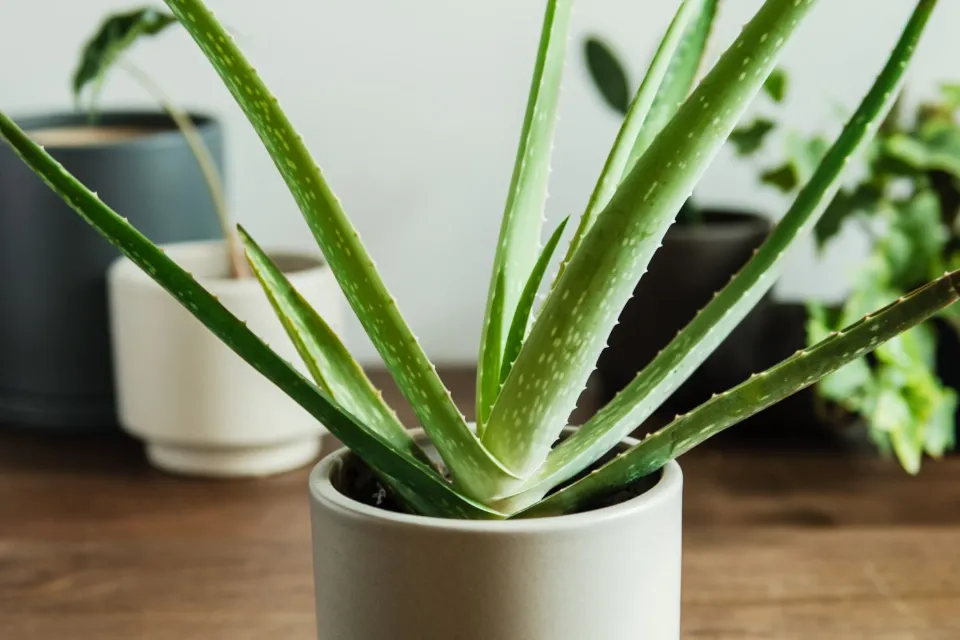
Choose a Well-draining Potting Soil
Aloe plants need well-draining potting soil in order to thrive. Overwatering can result from planting in potting soil that is too dense or doesn’t drain well.
There are a variety of soil mixes available on the market, but I recommend one that is specifically formulated for succulents and cacti. By doing this, you’ll make sure your plant has the drainage it requires.
Repot the Aloe Plant
Once you have selected a new pot and fresh soil, it’s time to repot your aloe plant.
Carefully place the plant in the new pot and fill it in with the potting soil, being sure to pack it around the roots.
Place the aloe plant in a bright, sunny spot. Bright, indirect sunlight is necessary for aloe plant growth. How much sun do aloe vera plants need?
Do not water the aloe vera plant immediately as it needs time to adjust to its new environment. Before watering, wait one or two weeks.
Keep a close eye on the aloe plant and only water when the soil feels dry to the touch.
A common mistake that leads to the death of aloe plants is overwatering, so avoid it at all costs!
You can restore your overwatered aloe plant to health by using these suggestions.
Just be sure to take action as soon as you see signs of overwatering because your indoor plant will have the best chance of recovering if you do.
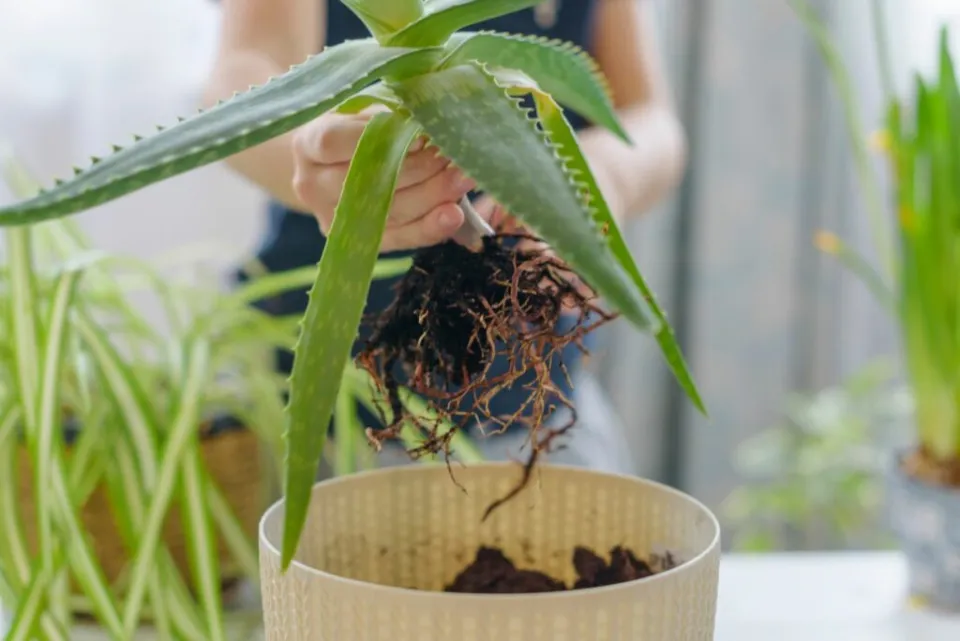
What Can Lead to Overwatering Issues?
The term “overwatering” is pretty self-explanatory, but there are a few other factors that could result in improper water drainage.
For instance, insufficient potting soil or the incorrect container, as well as unfavorable weather conditions, such as high humidity levels, can be the reason for overwatering.
Let’s go step by step and determine the issues leading to an overwatered Aloe plant, and how to deal with them.
Frequent Watering
Yes, excessively frequent watering is the primary cause of overwatering. People frequently overlook the fact that aloe is a succulent that can tolerate having its soil dry because growing aloe plants typically does not require much special plant care.
So how do you give your aloe vera just the right amount of water to keep her happy and healthy, keeping in mind that these are not cacti plants and that they will still need some water?
Well, how much water your plant needs depends on the provided conditions; for instance, if your Aloe plant is getting direct sunlight early in the morning, then you should water it at least once a week.
If you are growing your Aloe plant indoors, where it gets bright and indirect light, then you should water it every other week. Because the soil will quickly dry out if it receives direct sunlight every day, we water plants in this manner.
However, the best watering tip we can give you is that you should check if the first 2 inches of the topsoil have dried out: if so, then it is time for watering. Both the bottom and the top can be used to begin watering.
If you have chosen to water your Aloe plant from the top, make sure to put water in a sprayer and spray the plant in the evening. Stay away from washing the soil and watering the leaves.
On the other hand, if you want to do it from the bottom, then I would suggest you fill a pan with water in which you will put your Aloe plant; this should be done early in the morning so that your plant has enough water and nutrients.
Finally, I would advise you to check the soil again in a few days if it hasn’t dried out completely by the time you’ve checked it.
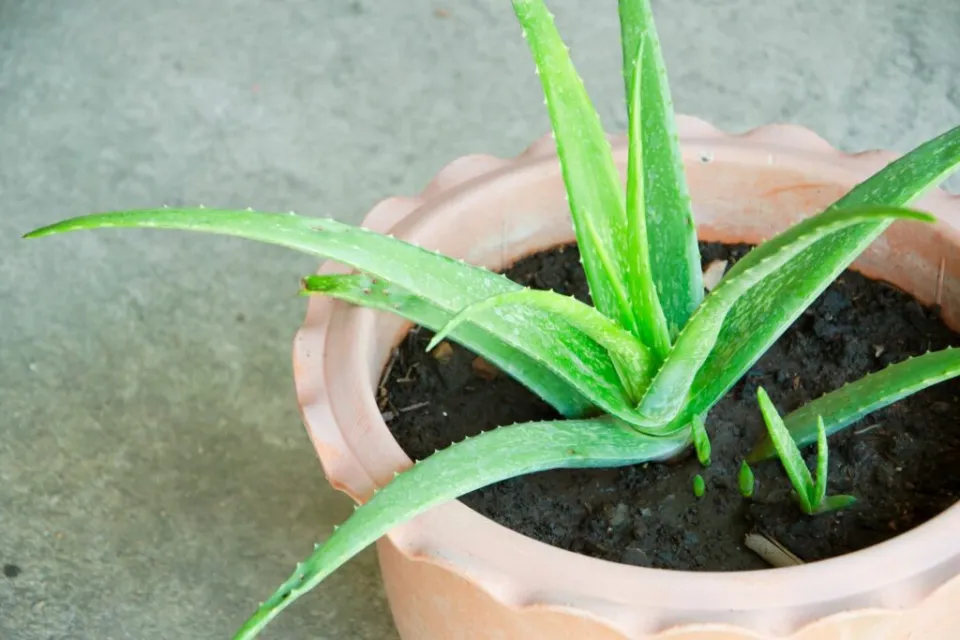
Inadequate Soil
Your aloe plant will thrive in a soil that drains well, doesn’t retain too much moisture, and isn’t too compact. Long-term soil saturation can result in clogged or rotting roots, which compromise the general health of your plant.
The most optimal potting mix for your indoor plant is a succulent mix — I am sure that you’ll find it in any garden shop nearby.
You can also make your own soil mix, to promote a healthy root system and water drainage: you can mix sand with perlite, bark and grit — trust me, your plant will absolutely love it!
Wrong Container
Growers frequently mistakenly believe that it is better to buy a larger pot, compared to the plant and its root ball, and to provide it with enough space when it comes to choosing an appropriate container for your Aloe plant.
Yes, you should buy a pot that is slightly larger than the root ball of your plant — nonetheless, if it provides the plant with too much space, the soil will retain much more moisture than needed, which can again, lead to overwatering.
When purchasing pots, you should also check for the drainage holes at the bottom of the pots, which allow extra water to drain.
If you find a pot that is absolutely stunning, but it does not have drainage holes at the bottom, don’t worry! You can always drill the holes at the bottom, just be careful not to make them too big.
Harsh Weather Conditions
If you’re growing your aloe vera plant outdoors in the summer, be sure to protect it from summertime downpours; if you’re growing it indoors, be mindful of the humidity.
Your plant will need more moisture because of the high humidity in the space, and it may experience symptoms of overwatering as a result. I would not advise pairing these two varieties of plants because tropical houseplants typically thrive in high humidity.
Your Aloe plant won’t like it if you run your humidifier all the time.
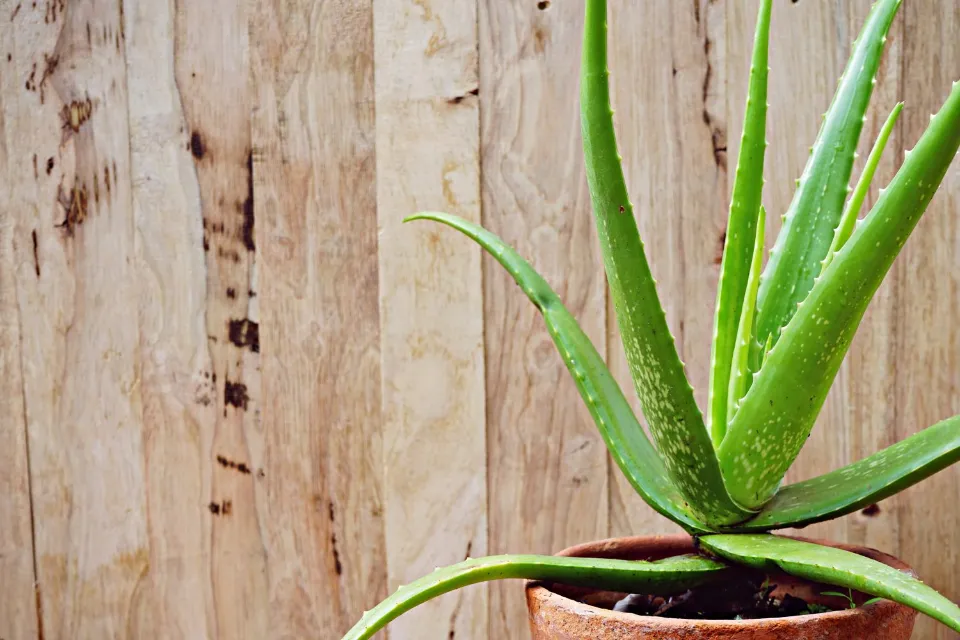
What Does An Overwatered Aloe Plant Look Like?
The leaves of an overwatered aloe are soft and mushy with some discoloration. Aloe plants may also curl and droop if they are overwatered. The impacted foliage may first turn brown before becoming soggy and dying.
How Do You Tell If You’re over Watering Aloe?
An overwatered aloe plant can be identified by its yellowing leaves and mushy stems. If you take your plant out of its pot and notice some rooting roots, overwatering is definitely the issue. You’re also probably overwatering your aloe if you see curling, fading, browning, blistering, dry, soft stem, and thinning of leaves. Additionally, wet soil that hasn’t dried even after several hours is a sign that you’re watering your plant excessively.
Read about
Here Are the Signs of An Overwatered Aloe Plant?
An aloe plant is an evergreen perennial that normally grows upright with fairly firm succulent leaves when healthy.
Therefore, if you notice changes in the appearance of your aloe plant from its usual vigorous state, such as fading leaves, mushy stems, and rotting spots, your aloe is likely experiencing issues as a result of overwatering.
Following are some warning signs of an overwatered aloe plant.
Root Rot Disease
If your aloe plant’s roots are exposed to too much moisture for too long, chances are, the plant is already suffering from root rot disease, or even pests like fungus gnats.
When the soil is soggy for a long period of time, it becomes an ideal habitat for soil fungi as well as other pathogens that cause diseases like root rot.
By their black or brown discoloration as well as their mushy texture, overwatered aloe plants with bad roots from root rot are easily recognized.
The bad smell that is produced is another characteristic of root rot.
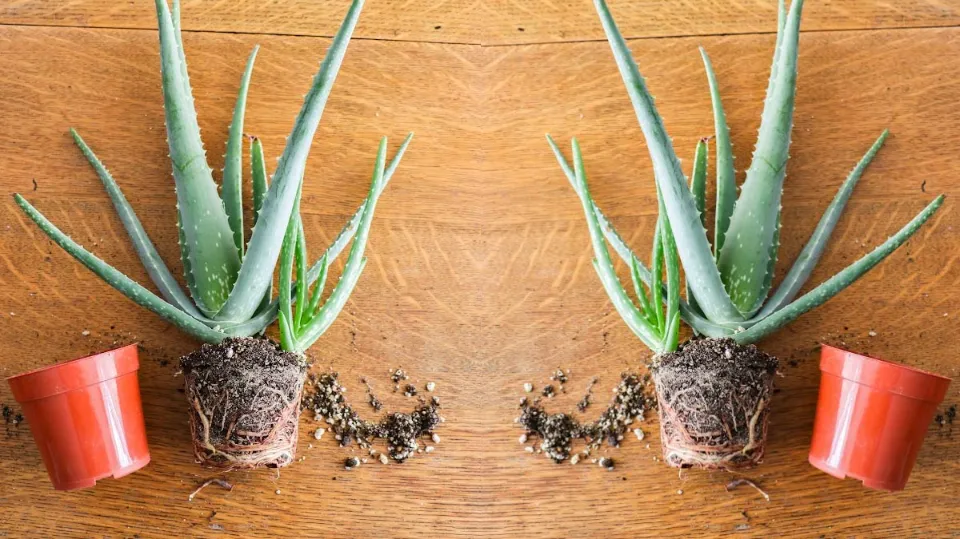
Soft Or Mushy Stem
If an aloe plant is overwatered, the stem may appear mushy or soft. The plant’s stem tissues are retaining excessive moisture, which is why the surface feels mushy.
Aloe leaves, in addition to the stem, will also get wet spots, giving the impression that the plant is weak, flimsy, and mushy.
A stem that is mushy or soft is a serious sign that your aloe plant is being overwatered and could die if it isn’t treated right away.
Aloe Plant Leaves Turning Yellow and Brown
One of the main reasons why aloe vera turns brown and yellow is excessive watering.
Aloe plants require little water to grow and thrive because they are native to arid desert regions of the world.
Aloe plants’ foliage begins to turn yellow when grown in containers with saturated soil because of the decreased absorption of nutrients from the growing medium.
If the issue is not addressed as soon as possible, your aloe’s foliage will look wrinkled and wilt aside from being yellow. Aloe plants that have been submerged can also display these symptoms.
The healthy aloe plant’s foliage, which is typically green and has a plump, glossy texture, does not exhibit these symptoms.
Other signs of an overwatered aloe plant include:
- blistered leaves, which soak up extra water.
- The potting soil has mold growing in it.
- Aloe’s outermost leaves are beginning to turn brown at the tips.
- Softening of the leaves and stems.
How Often Do You Water Aloe Vera Plant?
Various factors will affect how much water aloe vera plants need. During the warmer months, you should water it frequently, and at least twice every two weeks during the winter, if you’re growing one in your garden soil or in a clay pot outside.
But if you’re growing aloe vera plants indoors, they go for a month without giving water. But you should water them every week if they are in direct, bright sunlight. There should occasionally be plenty of water available for an aloe vera plant with several pups around the base.
How to Water Aloe Vera Plant?
Once you’ve confirmed that your aloe plant is not overwatered, but it actually needs some drink, then here’s how to water your aloe vera plant:
- Place the container in a sink or basin and fill it with water until drainage holes at the bottom of the container start to fill with water.
- Ideally, you should use distilled water or rainwater for best results. You can also use tap water, but it typically has chlorine and other chemicals that are bad for plants. Your aloe vera plant may suffer once these chemicals build up in the potting soil.
- Once you’ve provided enough water, let the excess water to drain. Most of the time, people just let the pot sit on the saucer or tray. This is bad because the soil won’t be able to breathe, your aloe’s roots are likely to stay wet, and overwatering issues may arise. So, make sure to remove the accumulated water from the saucer.
- The most important thing to remember when it comes to watering is that you need to regularly check the potting soil’s moisture level.
- You shouldn’t water on a weekly or biweekly basis because the evaporation rate will be affected by certain factors such as weather conditions, heat, and even the size of your aloe.
- Instead of following a rigid watering schedule, you should make it a habit to regularly check the moisture levels and water your plant as it requires.
Top watering tips:
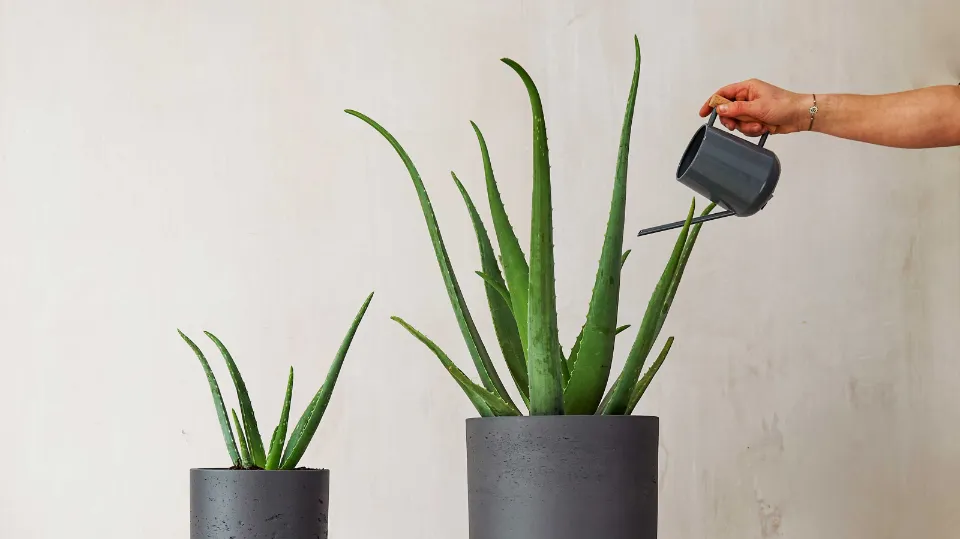
Frequently Asked Questions
What is the Best Way to Water An Aloe Plant?
By inspecting the soil first before watering, you can water an aloe plant more effectively. A moisture meter can be used, as well as your fingers. It is relatively simple to overwater an aloe plant because they are succulents with low water needs.
Temperature, humidity, and light conditions can also affect how much water a plant needs. For example, if you leave a plant in direct sunlight for a few hours, the soil will dry out more quickly and your plant will require additional watering.
The soil will take a few extra days to dry out if the plant is kept indoors in an area with indirect sunlight.
What Should You Do If Your Aloe Plant is Not Receiving Enough Water?
In most cases, the aloe is not planted in suitable, well-draining soil, so you should check the soil first. Your Aloe plant needs sandy soil that is not too compact, so that it can easily absorb and drain the water.
Additionally, you can increase the humidity in your space and water your plant more frequently, but always make sure the soil is completely dry before doing so.
How to Revive An Overwatered Aloe Vera Plant?
If the leaves are beginning to change and the plant has been watered more frequently than usual, you should stop watering it and leave it in the sun for a few hours to see how severe the overwatering problem is.
Cut off the damaged roots and repot the plant in fresh, fungus-free soil if overwatering causes root rot.
If the damage is already done and your plant is unable to recover, you can always look for offshoots for propagation and begin growing your aloe plant from seed.
Summary: How to Save An Overwatered Aloe Plant?
How to save an overwatered aloe vera plant? Remove the aloe plant from its pot, Remove the dead/damaged roots, remove any yellow or brown leaves, treat the remaining healthy roots with a fungicide, select a new pot, choose a well-draining potting soil, and repot the aloe plant.
There are many benefits of the Aloe plant, especially in cosmetics because nowadays it seems that almost all moisturizers and creams have been made with Aloe plants (and they cost a fortune!). You can grow this plant and make your own creams and face masks, and at the same time, improve your home decor!
Aloe is a type of tall succulent that does not require frequent watering, which is why overwatering is a common problem when growing Aloe as a houseplant.
Nonetheless, every problem has a solution, therefore, you might still be able to save your overwatered Aloe plant!
If you have any questions, please leave a comment. My Prime Home tries to give you the best home improvement information. Don’t forget to share the post. Thank you for reading.
